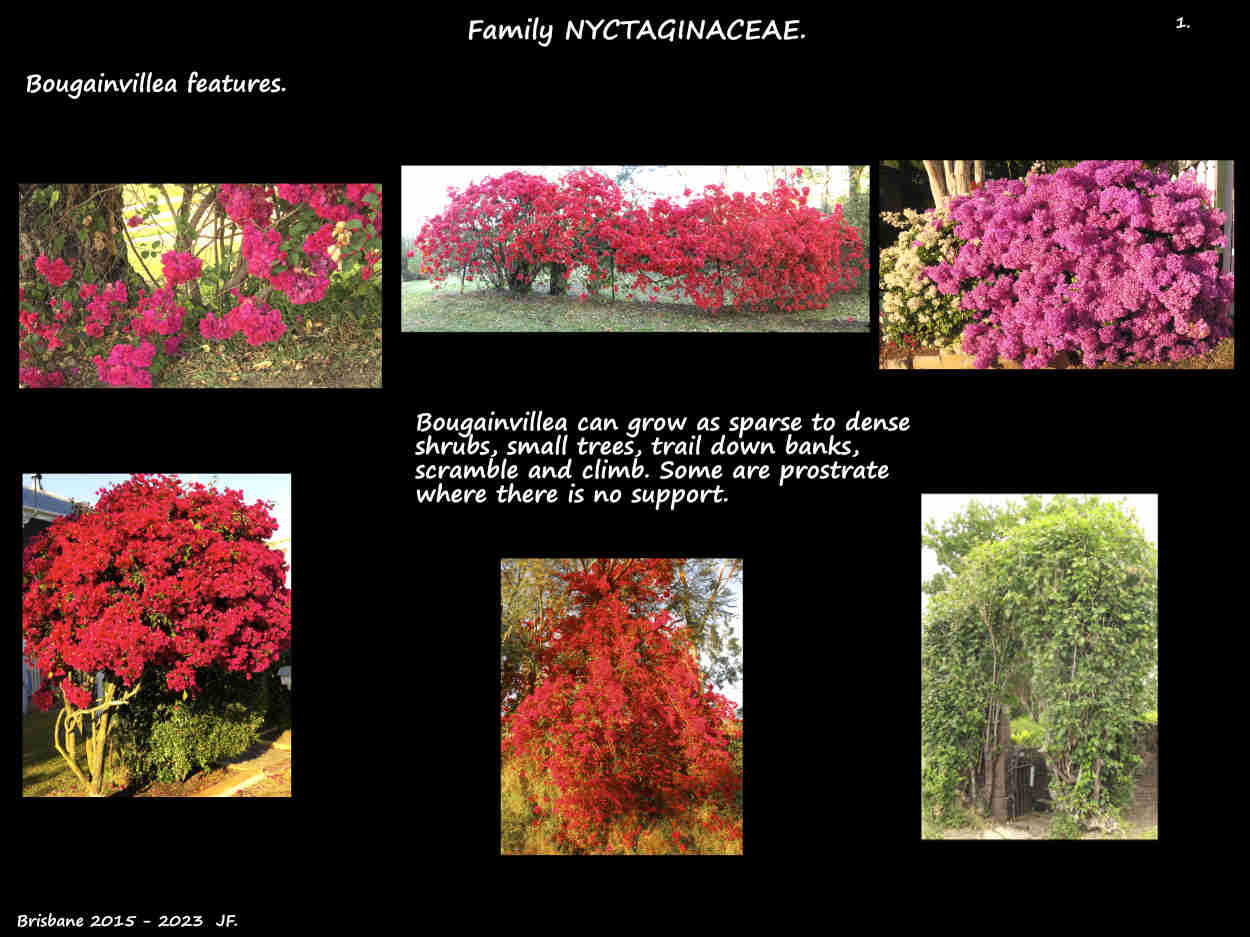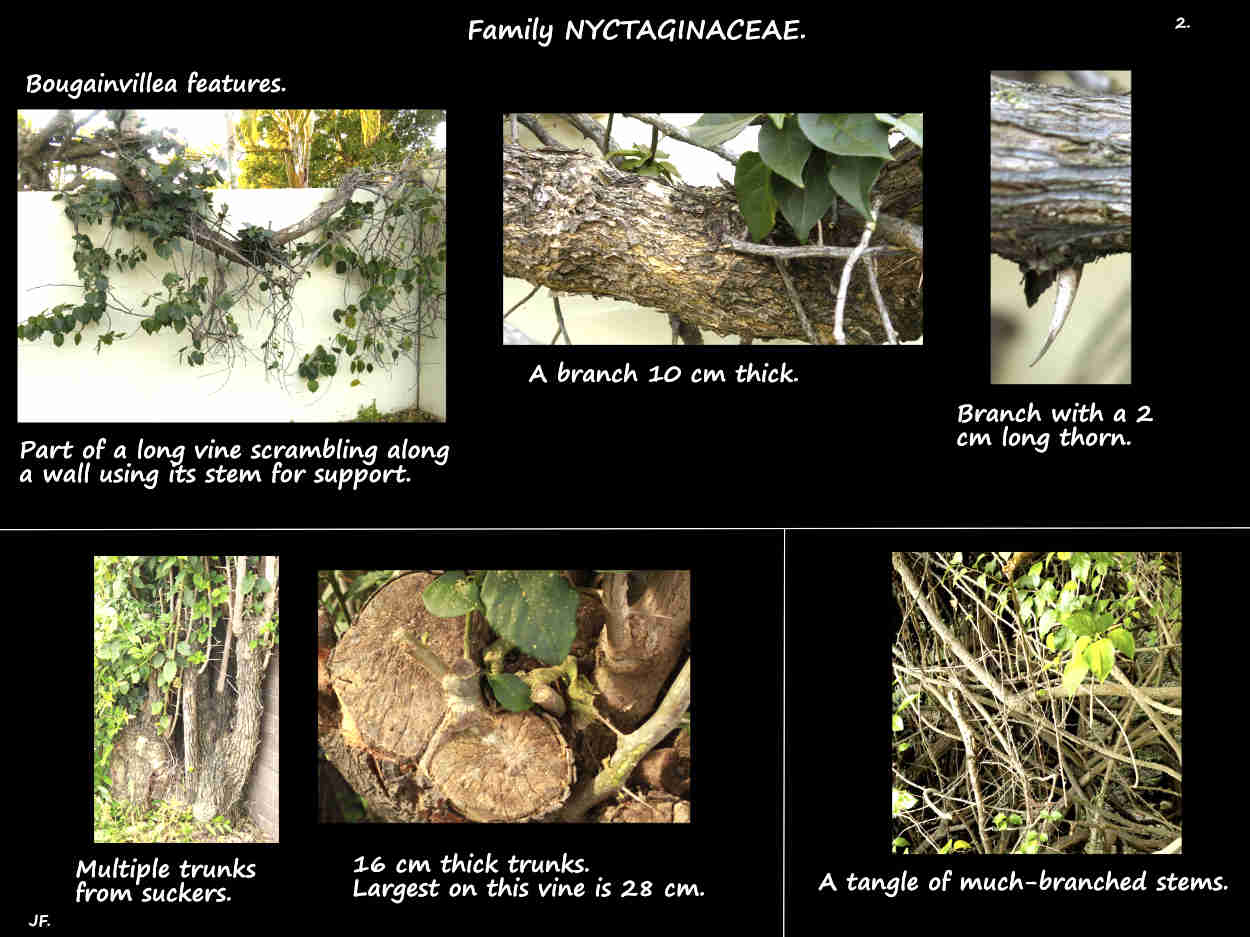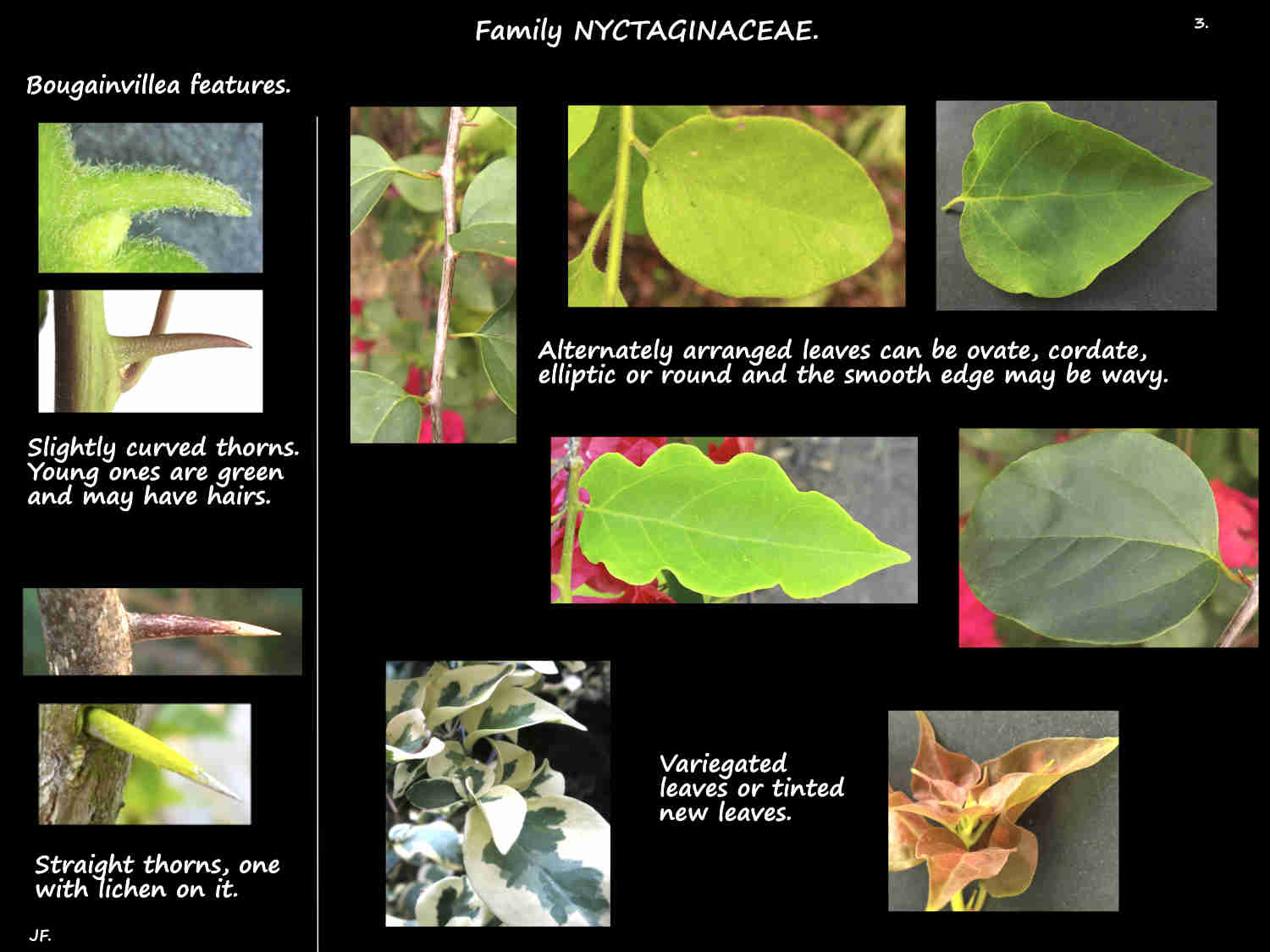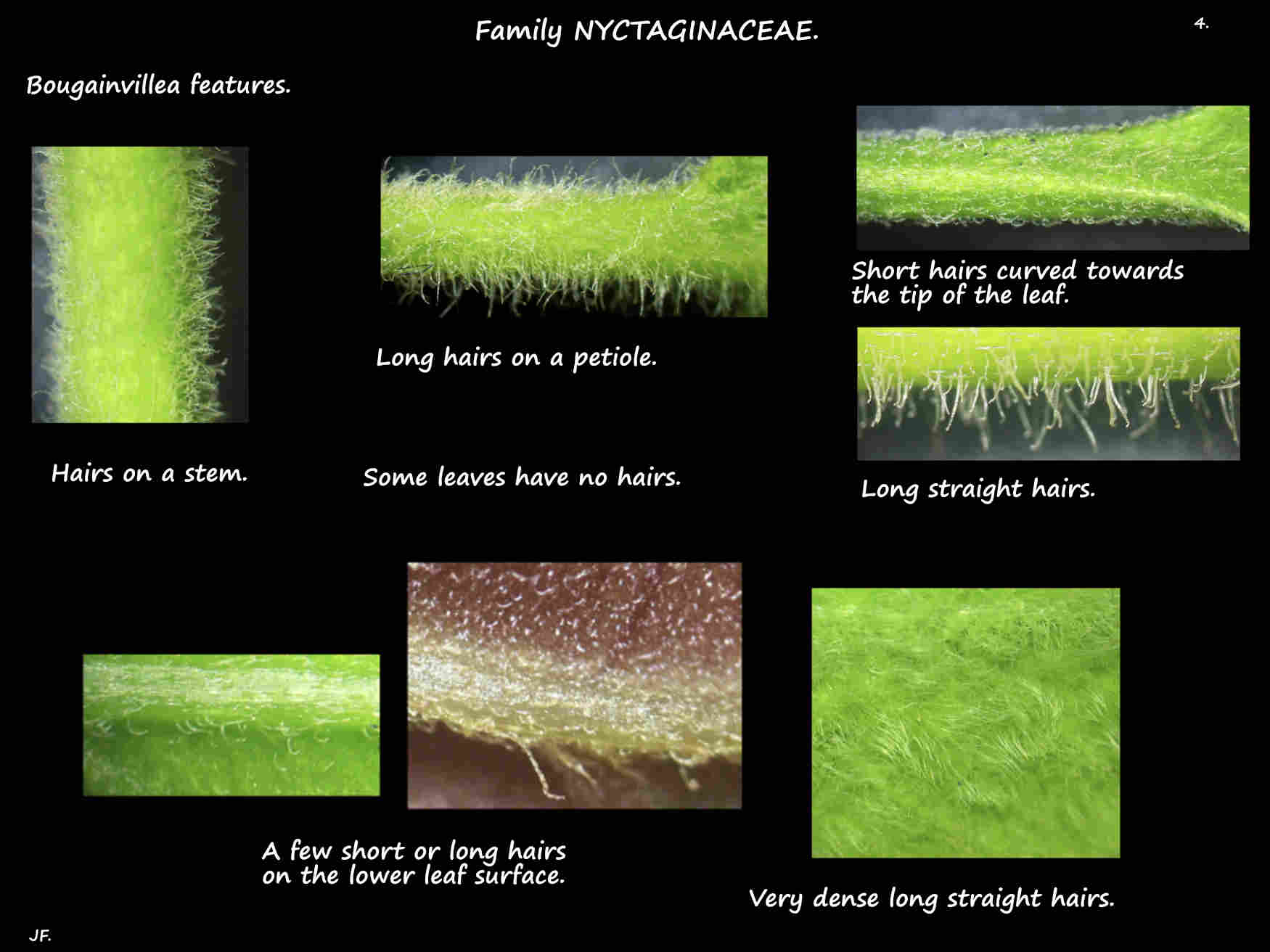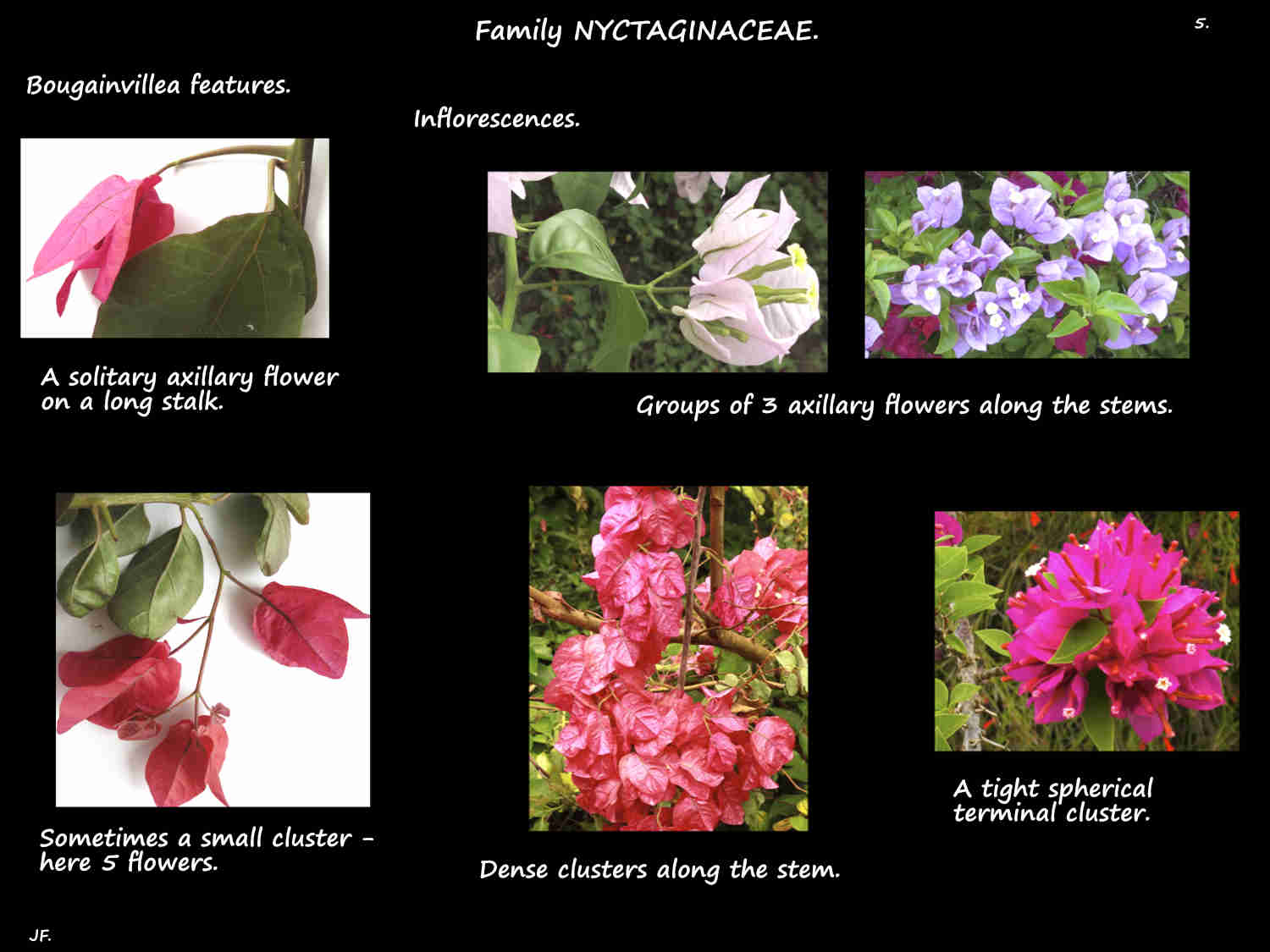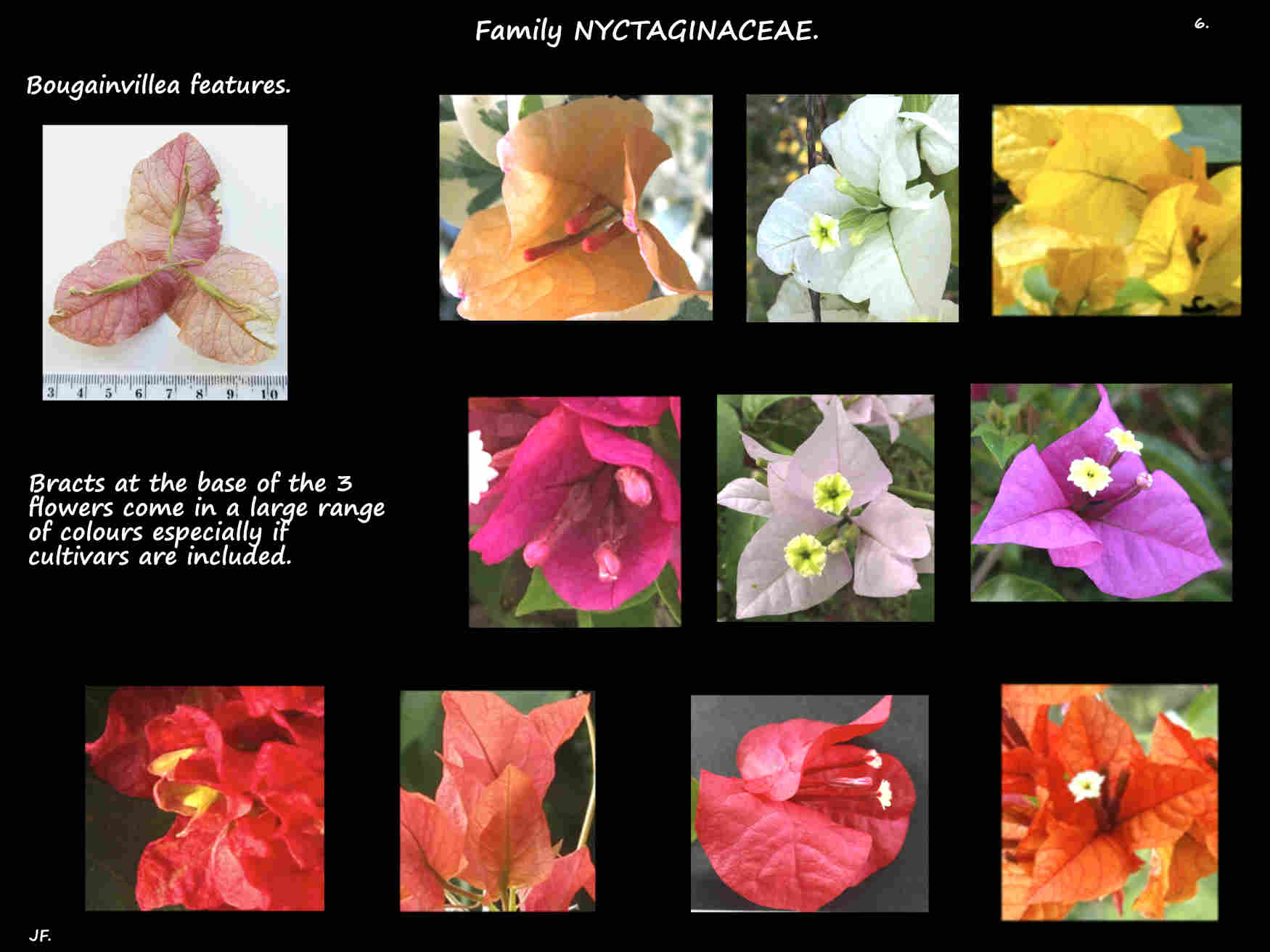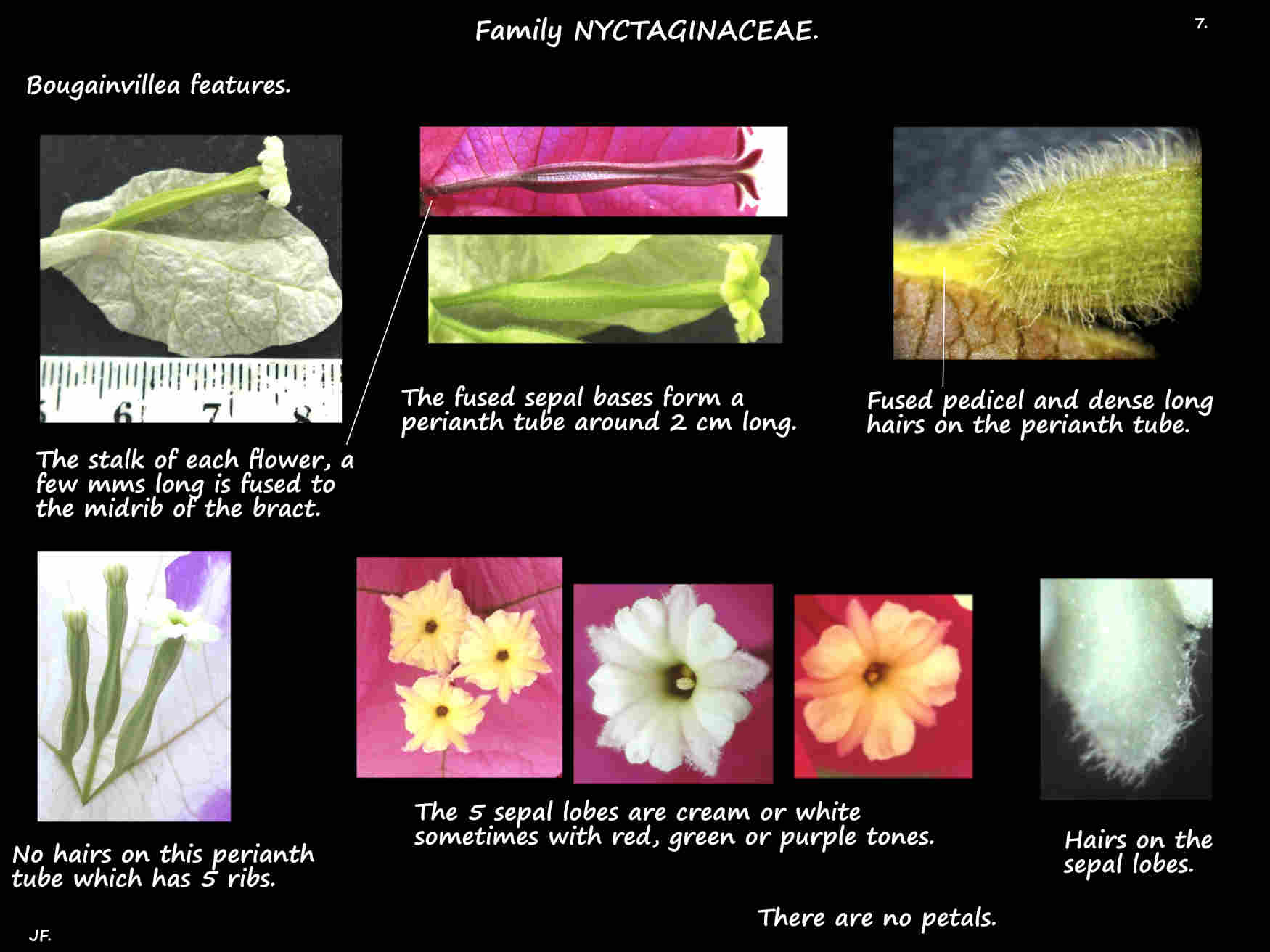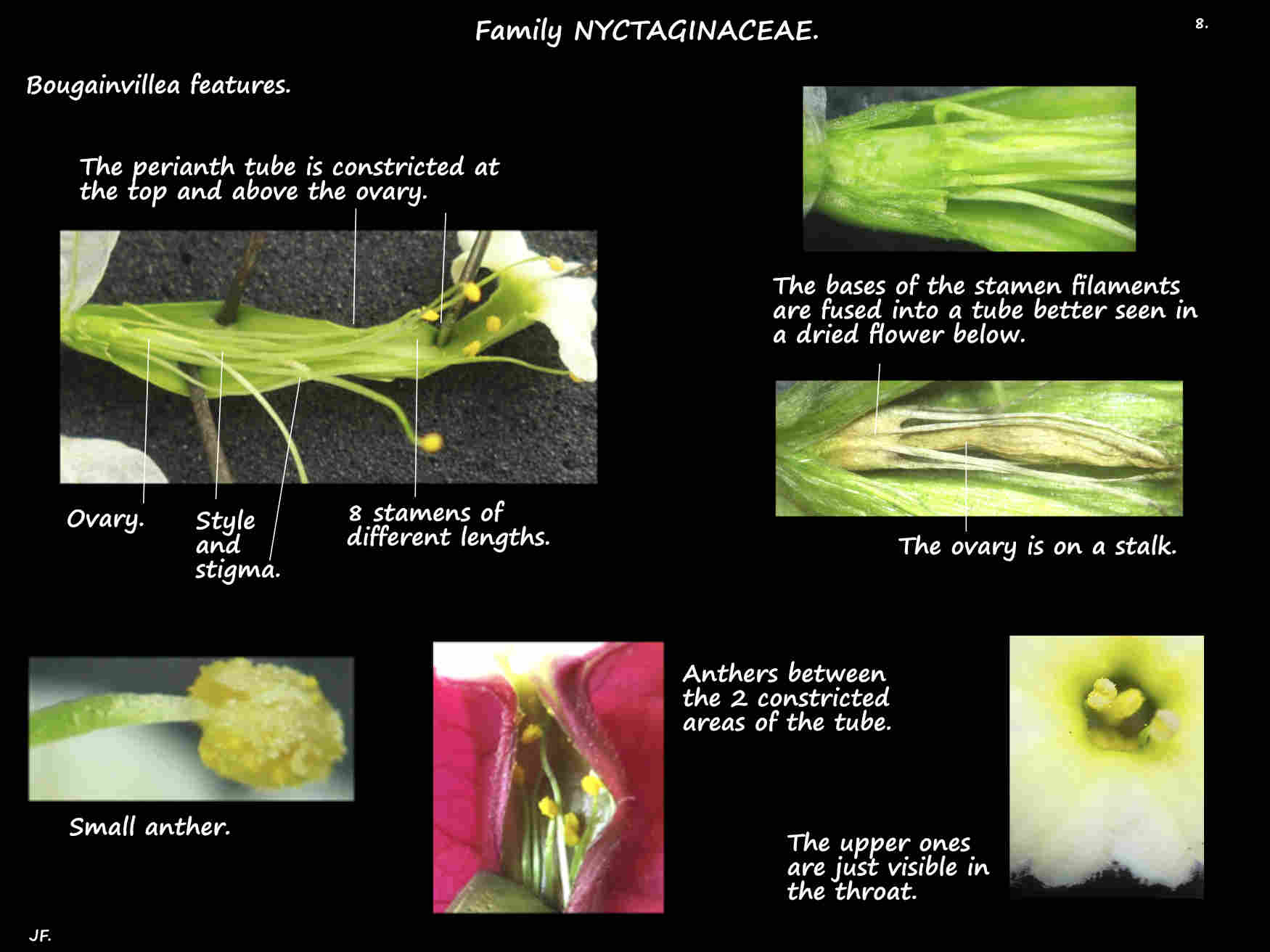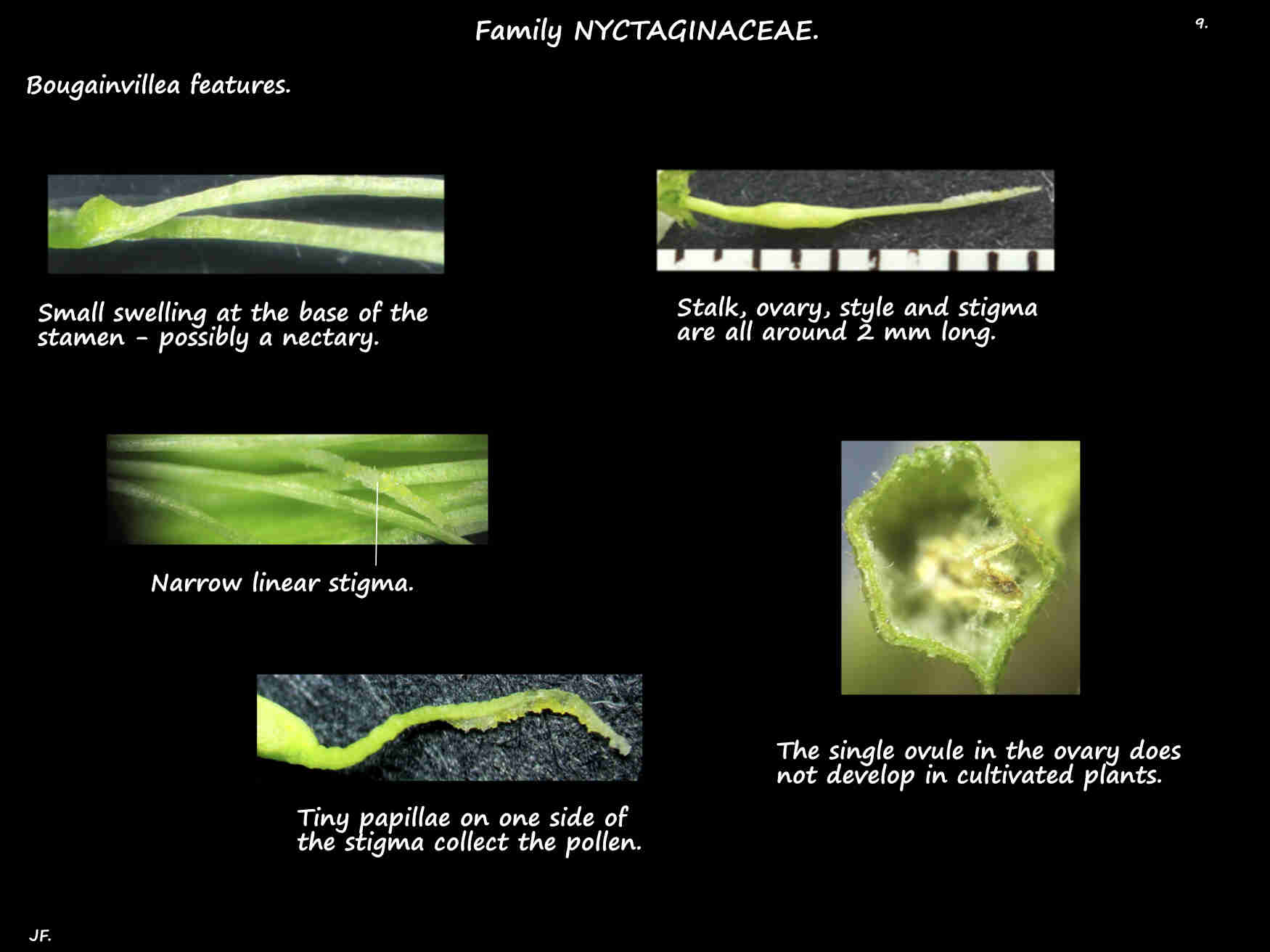Bougainvillea.
Native to eastern South America there are 16 or 17 species of Paper flowers that are widely accepted.
They are much branched shrubs, trees or woody vines (lianas) up to 25 or 30 m high.
Young stems are green and older ones become woody.
They have green then woody axillary thorns that can be straight or curved downwards (or both on young branches).
They scramble over other vegetation using their long arching branches and thorns for support.
They can sucker and the stems root at the nodes which can result in multiple trunks and dense thickets.
The simple alternately arranged leaves are on petioles up to 2.5 cm long.
The ovate, round, cordate or elliptic leaves, with a pointed tip are up to around 12 cm long and 6 cm wide.
They are mid to dark green with smooth or sometimes wavy edges.
There may be no hairs or fine or coarse, sparse to dense, long or short ones on the stems and leaves.
The axillary inflorescences typically have 3 stalked (pedicillate) flowers on a common stalk or peduncle.
The peduncles can be around 1 to 8 cm long and the pedicels around 5 mm.
Inflorescences can also be large branched axillary or terminal clusters.
Each flower has its pedicel fused to the midrib of a large bract.
From 2 to 10 cm long the ovate to elliptic bracts are usually longer than the flowers but this does vary.
Bracts can be white or pink, yellow, orange, magenta and shades of red and purple.
The thin papery bracts persist for months and are often mistaken for the flowers.
Flowers, around 2 cm long have no petals.
The bases of the sepals are fused into a tube around 2 cm long with 5 flaring lobes a few mms long.
The tube may be circular in cross section or have 5 ribs and it is constricted at the top and above the ovary.
It can be smooth or covered in hairs, sometimes dense on the outer surface.
The tube is usually green or red to purplish and the lobes cream or white with some yellow, red or purple areas.
The 8 stamens, of different lengths lie within the tube.
The superior ovary, on a stalk has one locule with a single ovule.
The style can be 1 mm long or extend to near the end of the tube.
Fruit are rarely produced here with reproduction being from suckers or the stems rooting.
A few species are cultivated but most of the plants seen are cultivars of them.
J.F.

